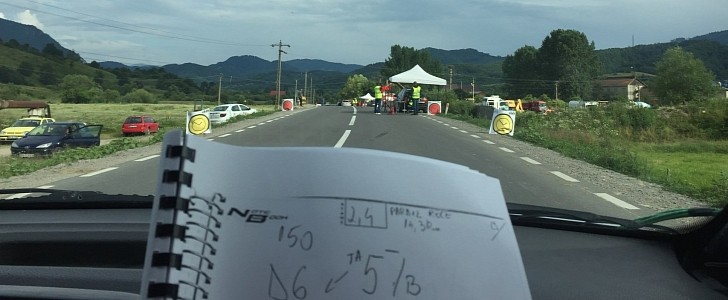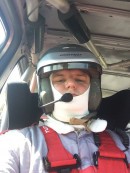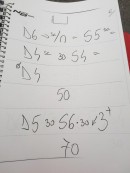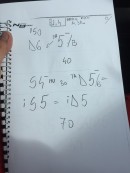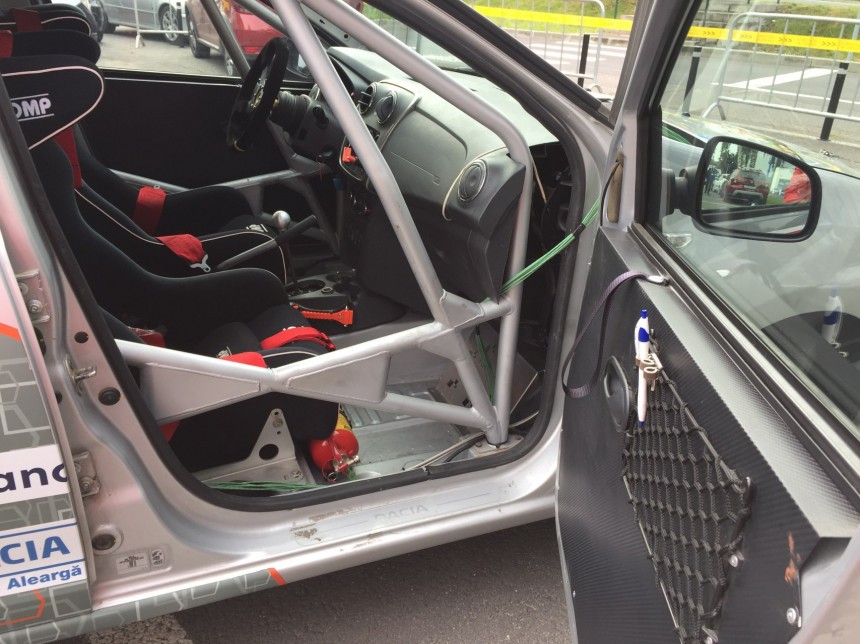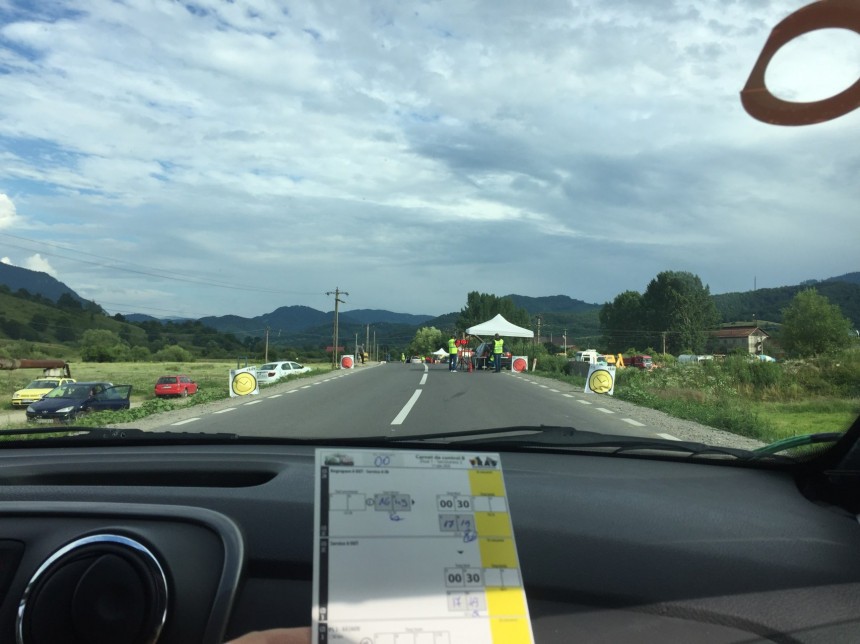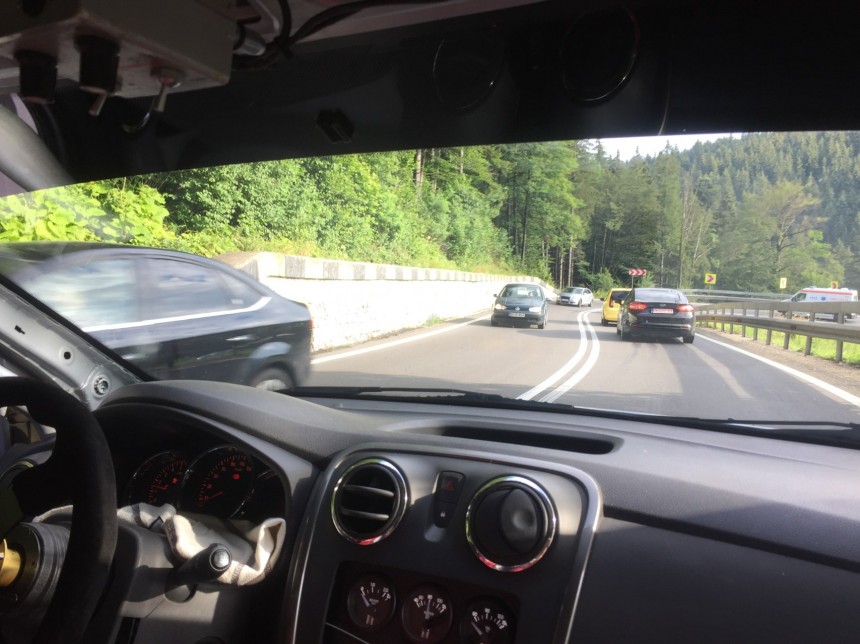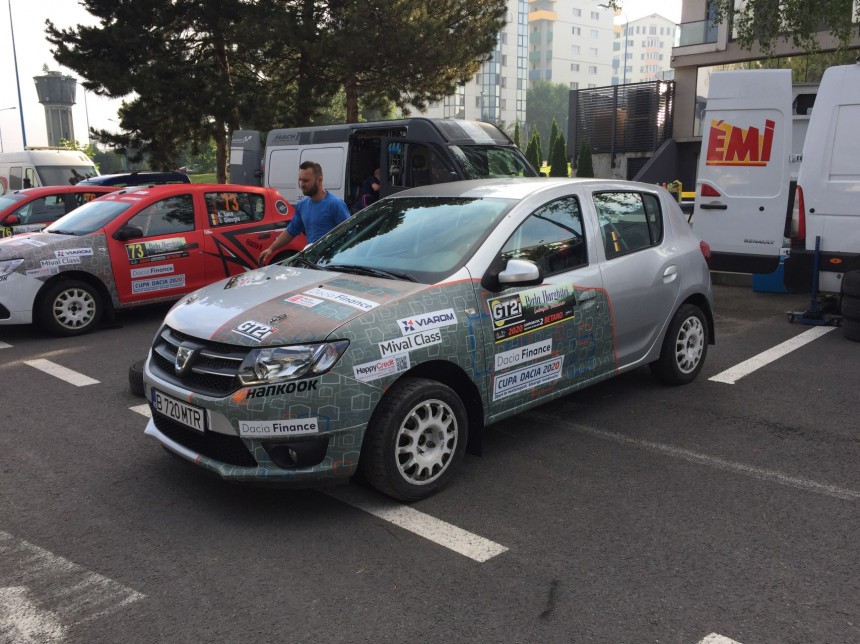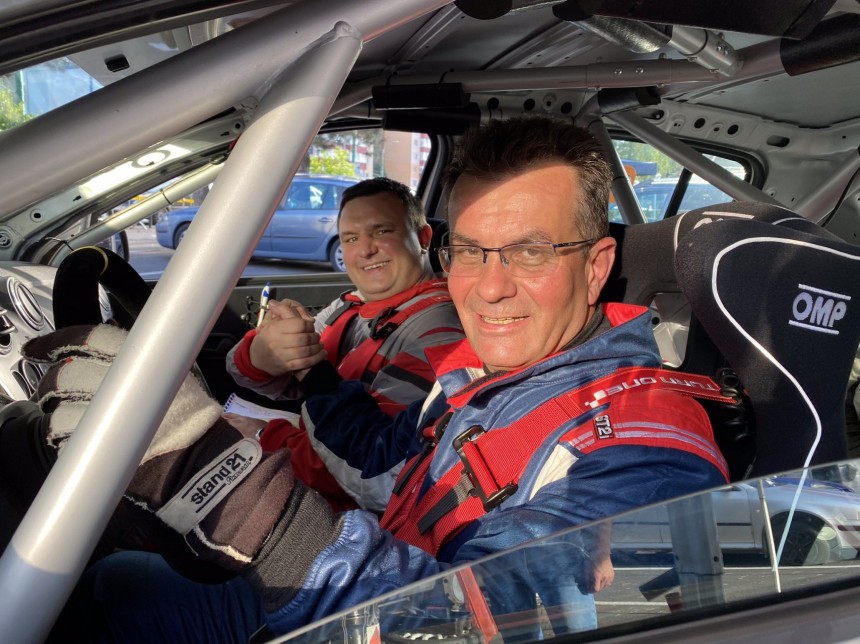Earlier this week, I wrote about the tasks of a co-driver from the perspective of WRC racers Oliver Solberg and Elliott Edmondson. With that in mind, I got nostalgic about the time when I had the opportunity to be a co-driver in a rally car and what that meant.
With that being written, here is a general overview of most of the tasks that a co-driver faces. Be warned, there are many other smaller things that must also happen, which may be left out. But this article should provide you with an idea of what is going on.
To the uninitiated, a co-driver appears to have the strangest job in a rally car. It may appear that a person holding a notebook is just screaming things in gibberish to the driver. Instead, the role of a co-driver far exceeds providing navigational instructions. Yes, that is the key role, but the attributions also involve numerous other administrative tasks.
It is important to note that, depending on the level of the competition (I.e., local rallies, national rallies, WRC), there may be someone to help the co-driver with some tasks, which means that the co-driver gets to have maximum focus on their duty in the car.
In real life, though, a co-driver of a newcomer rally team will have to be a logistical manager of sorts, as they will have to help the driver prepare for a rally with many days of the one when they go and compete against the clock. This article will focus mostly on the general tasks of a co-driver, with a few additions where the situation allows it.
First, a rally co-driver, or a navigator, must be fully aware of the rules of each race. Failing to follow the rules may lead to being excluded from an event, which means zero points earned and wasting the money spent getting there.
Those who are just starting out racing will have to be extremely careful budget-wise, as losing money that way will not get them very far. Sticking to the rules is essential for all competitors, especially since both organizers can penalize a crew for that, but other crews can file a complaint if they suspect others of failing to abide by the rules.
With the rules understood, the crew signs up for a rally. They will receive a “rally kit” upon their arrival. It includes a road book, a time card, a GPS for their recce car, a GPS for their racing car, and a few other documents. Losing any one of those is game over, just to be clear.
The first step will be to begin what is called "recce," which is supposed to be short for reconnaissance. FIA rules allow rally crews two passes on a special stage in open traffic conditions to allow them to make and check their pacenotes.
The process involves driving at road-legal speeds (there is a GPS onboard to check) and having the driver rate each corner with a number from 1 to 6 in the special stages. With the pacenotes finalized, the crew gets to drive the stages yet again, but this time the co-driver reads out the notes to the driver, and they make changes to them if something is off. For example, if the notes say left and the road goes right, you are doing something wrong.
Many rally crews have cameras on board, which are also patched into the vehicle's communication system. It involves two headsets with microphones that relay to the driver what the co-driver is saying and vice versa. It helps mitigate the noise of the racing car, as well.
In the evening after the recce, the co-driver will transcribe the notes on fresh notebooks and will watch the onboard footage with the driver to ensure it is correct. Tricky turns are marked with an exclamation mark, which may be underlined or have one or two more exclamation marks near it to underscore the need for elevated attention.
For example, a corner that has an unusual banking, a natural or artificial obstacle, or something as mundane as a pothole will require placing an exclamation point in the pacenotes, which is read as "Care," "Attention," "Danger," or whatever the driver wants to call them. It is the co-driver's job to have it written down and to read it at the right time. The pace at which pacenotes are read is something between each driver and co-driver, and both need to adapt to each other.
As you may have noticed, we have not discussed actual racing yet. Before the first timed stage must begin, the crew must refuel from an approved gas station, and they may only use the agreed ones that are on the route to the first timed stage, also called a special stage.
Once the crew arrives in the queue to the start, it is the co-driver's job to tell the driver when to proceed and move the vehicle in front of the marshal who is waiting to receive the time card. Each rally stage start zone must be reached before a particular time, and arriving too late or too early gets you a penalty. Yes, rallies have been lost this way.
There are special rallies organized just for this particular skill of timekeeping and "pacing" a driver, and they are called regularity rallies. In those events only, the goal is to have a rather slow average speed in open traffic while navigating from waypoint to waypoint. The same goes for conventional rallies, but there are sections that involve closing the road to other vehicles, as well as higher speeds and so on.
The co-driver will have to open the window and reach out their hand with the time card in hand, towards the marshal, at the right time. Then, the marshal will write their time of arrival on the card and then hand it back to the navigator. Failing to have a time card at the end of a rally brings so much penalty time that you will regret leaving your bed in the morning.
The marshal will also inform the co-driver of the start time, which is displayed on an external digital clock right next to the inflatable gate that hides the cells that start the timer. As the start time approaches, it is the co-driver's job to count the last 10 seconds down for the driver. Leaving past the designated time means seconds lost, jumping the gun means minutes of penalty time. You might as well not press the gas pedal all the way down.
During the timed stage, the co-driver will read out the pacenotes made a few days before on the same stage. Each crew has its specific set of notes, so they are not necessarily interchangeable. Each driver may view a corner differently, so driving on someone else's notes may be confusing.
When I was invited to participate as a co-driver in a rally, I was also handed a copy of another crew's pacenotes, as I was not involved in the recce process. That simplified and complicated my life at the same time.
Each driver prefers a certain style of how their pacenotes should be read. Some prefer repeating important turns, while others want to hear the notes with one or two corners ahead. Beginners will just want to hear the notes in time for the next corner, and rightfully so.
It is essential for the co-driver not to get lost, which is why pacenotes also may include static markers such as electricity poles, houses, broad trees, and whatnot. Whatever does not move is good to include as a reference in your notes.
Some co-drivers occasionally lift their eyes from the notepad to gaze at the road ahead while reading notes just to check, while others remain focused on their notepad for the entire race. Many lift their eyes from the notepad after switching pages, from what I have observed.
The trick is to have your fingers in between the pages, so you can change them without having to pinch the corner of the page. This is not a job for clumsy people or daydreamers.
Moreover, the co-driver will also have to keep an eye on how the driver reacts to what is going on, as well as monitor key parameters in a car, such as temperatures, fuel level, and so on. In some rally cars, the co-driver has a pedal for activating the horn or one for the windshield wipers.
As more experienced co-drivers have told me over the years, it is their job to manage the driver and to "pace" them if they notice that something is off, such as the driver is going slower than usual or just trying too hard. An old saying from racing goes like this: "to finish first, first you have to finish."
With the timed stage completed, it is the co-driver's turn to open the window, extend his hand with the time card to the marshal, and get the stage time. From there, the crew moves on to the next timed stage, but in open traffic, so all traffic rules must be observed, as well as the predetermined route in the roadbook, mandatory for all contestants.
It may sound simple, but all this happens in either freezing temperatures or in the middle of summer when the race cars get exceedingly hot.
Every rally crew must wear flameproof overalls, complete with helmets, HANS devices, flameproof shoes, and so on, all FIA-approved, of course. The co-driver does not have to wear flameproof gloves, which is an extra risk for them.
Through the nature of my work, I have gotten the chance to be a passenger in several racing cars and road-going vehicles driven by rally drivers. I knew my stomach was strong enough, but the challenge now was to read pacenotes as well, which takes things up a notch.
My co-driving experience went flawlessly thanks to rally veteran George Grigorescu, who has more years of racing than I have lived. I am thankful that I had the opportunity to experience this.
With an experienced rally driver behind the wheel, my concern was not to get sick because of heat exhaustion, my Achilles' heel. As you can imagine, racing cars do not have air conditioning, and opening the windows to get fresh air is forbidden during a rally stage, which means that airflow is limited, and temperatures are high.
As I explained above, these are just a few of a co-driver's attributions during a rally. Usually, you also need to calculate remaining fuel, decide how much to refuel on your next stop, monitor tire pressures, ensure you do not get lost, be sure you have water in the car, and many more. I was spared of those tasks for that day.
The co-driver is essentially a sidekick for the driver, and the pair needs to have complete confidence in each other for things to work on an optimal level.
If the driver does not trust their co-driver, they will never be competitive, as they will essentially drive by "line of sight," rather than basing their driving on pacenotes, while co-drivers who do not trust their drivers might not be the best at their jobs either.
This trust between the driver and co-driver is critical, as the former must trust the latter to not navigate them off a cliff, while the latter must trust the former not to drive them off a cliff.
To the uninitiated, a co-driver appears to have the strangest job in a rally car. It may appear that a person holding a notebook is just screaming things in gibberish to the driver. Instead, the role of a co-driver far exceeds providing navigational instructions. Yes, that is the key role, but the attributions also involve numerous other administrative tasks.
It is important to note that, depending on the level of the competition (I.e., local rallies, national rallies, WRC), there may be someone to help the co-driver with some tasks, which means that the co-driver gets to have maximum focus on their duty in the car.
In real life, though, a co-driver of a newcomer rally team will have to be a logistical manager of sorts, as they will have to help the driver prepare for a rally with many days of the one when they go and compete against the clock. This article will focus mostly on the general tasks of a co-driver, with a few additions where the situation allows it.
Those who are just starting out racing will have to be extremely careful budget-wise, as losing money that way will not get them very far. Sticking to the rules is essential for all competitors, especially since both organizers can penalize a crew for that, but other crews can file a complaint if they suspect others of failing to abide by the rules.
With the rules understood, the crew signs up for a rally. They will receive a “rally kit” upon their arrival. It includes a road book, a time card, a GPS for their recce car, a GPS for their racing car, and a few other documents. Losing any one of those is game over, just to be clear.
The first step will be to begin what is called "recce," which is supposed to be short for reconnaissance. FIA rules allow rally crews two passes on a special stage in open traffic conditions to allow them to make and check their pacenotes.
Many rally crews have cameras on board, which are also patched into the vehicle's communication system. It involves two headsets with microphones that relay to the driver what the co-driver is saying and vice versa. It helps mitigate the noise of the racing car, as well.
In the evening after the recce, the co-driver will transcribe the notes on fresh notebooks and will watch the onboard footage with the driver to ensure it is correct. Tricky turns are marked with an exclamation mark, which may be underlined or have one or two more exclamation marks near it to underscore the need for elevated attention.
For example, a corner that has an unusual banking, a natural or artificial obstacle, or something as mundane as a pothole will require placing an exclamation point in the pacenotes, which is read as "Care," "Attention," "Danger," or whatever the driver wants to call them. It is the co-driver's job to have it written down and to read it at the right time. The pace at which pacenotes are read is something between each driver and co-driver, and both need to adapt to each other.
Once the crew arrives in the queue to the start, it is the co-driver's job to tell the driver when to proceed and move the vehicle in front of the marshal who is waiting to receive the time card. Each rally stage start zone must be reached before a particular time, and arriving too late or too early gets you a penalty. Yes, rallies have been lost this way.
There are special rallies organized just for this particular skill of timekeeping and "pacing" a driver, and they are called regularity rallies. In those events only, the goal is to have a rather slow average speed in open traffic while navigating from waypoint to waypoint. The same goes for conventional rallies, but there are sections that involve closing the road to other vehicles, as well as higher speeds and so on.
The co-driver will have to open the window and reach out their hand with the time card in hand, towards the marshal, at the right time. Then, the marshal will write their time of arrival on the card and then hand it back to the navigator. Failing to have a time card at the end of a rally brings so much penalty time that you will regret leaving your bed in the morning.
During the timed stage, the co-driver will read out the pacenotes made a few days before on the same stage. Each crew has its specific set of notes, so they are not necessarily interchangeable. Each driver may view a corner differently, so driving on someone else's notes may be confusing.
When I was invited to participate as a co-driver in a rally, I was also handed a copy of another crew's pacenotes, as I was not involved in the recce process. That simplified and complicated my life at the same time.
Each driver prefers a certain style of how their pacenotes should be read. Some prefer repeating important turns, while others want to hear the notes with one or two corners ahead. Beginners will just want to hear the notes in time for the next corner, and rightfully so.
Some co-drivers occasionally lift their eyes from the notepad to gaze at the road ahead while reading notes just to check, while others remain focused on their notepad for the entire race. Many lift their eyes from the notepad after switching pages, from what I have observed.
The trick is to have your fingers in between the pages, so you can change them without having to pinch the corner of the page. This is not a job for clumsy people or daydreamers.
Moreover, the co-driver will also have to keep an eye on how the driver reacts to what is going on, as well as monitor key parameters in a car, such as temperatures, fuel level, and so on. In some rally cars, the co-driver has a pedal for activating the horn or one for the windshield wipers.
With the timed stage completed, it is the co-driver's turn to open the window, extend his hand with the time card to the marshal, and get the stage time. From there, the crew moves on to the next timed stage, but in open traffic, so all traffic rules must be observed, as well as the predetermined route in the roadbook, mandatory for all contestants.
It may sound simple, but all this happens in either freezing temperatures or in the middle of summer when the race cars get exceedingly hot.
Every rally crew must wear flameproof overalls, complete with helmets, HANS devices, flameproof shoes, and so on, all FIA-approved, of course. The co-driver does not have to wear flameproof gloves, which is an extra risk for them.
My co-driving experience went flawlessly thanks to rally veteran George Grigorescu, who has more years of racing than I have lived. I am thankful that I had the opportunity to experience this.
With an experienced rally driver behind the wheel, my concern was not to get sick because of heat exhaustion, my Achilles' heel. As you can imagine, racing cars do not have air conditioning, and opening the windows to get fresh air is forbidden during a rally stage, which means that airflow is limited, and temperatures are high.
As I explained above, these are just a few of a co-driver's attributions during a rally. Usually, you also need to calculate remaining fuel, decide how much to refuel on your next stop, monitor tire pressures, ensure you do not get lost, be sure you have water in the car, and many more. I was spared of those tasks for that day.
If the driver does not trust their co-driver, they will never be competitive, as they will essentially drive by "line of sight," rather than basing their driving on pacenotes, while co-drivers who do not trust their drivers might not be the best at their jobs either.
This trust between the driver and co-driver is critical, as the former must trust the latter to not navigate them off a cliff, while the latter must trust the former not to drive them off a cliff.
